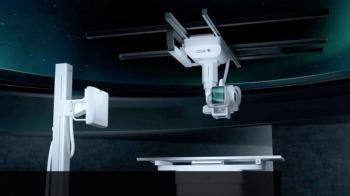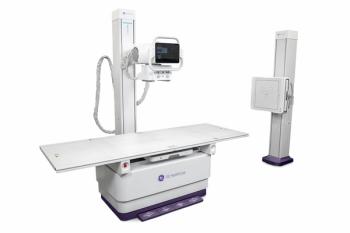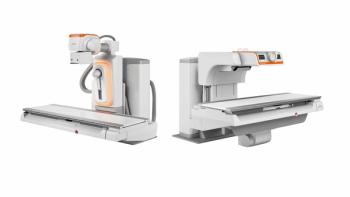
Walk-Up X-ray Booth Offers Quick Scans to COVID-19 Patients
Penn State offers patients quick management chest X-rays with little equipment exposure or need for decontamination.
Imagine walking into a photo booth – or pulling into a drive-thru – for an X-ray. It might sound strange, but that’s exactly what Penn State Health is offering to patients during the COVID-19 pandemic.
It’s called the Radiology Annex, and it serves patients in the community who have either tested positive for COVID-19 and are under home management, as well as patients with acute respiratory symptoms that don’t resemble COVID-19.
“Ambulatory communities with a large population that may or may not have COVID-19 are a tough group to manage,” said Timothy Mosher, M.D., chair of radiology at Penn State Health. “And, radiology offices are faced with the challenge of trying to prevent cross-exposures, making sure that patients who don’t have the virus aren’t exposed to patients that do.”
To minimize those risks, as well as reduce the down time needed to decontaminate equipment and exam rooms, Penn State got creative. According to Mosher, they outfitted one of their outpatient clinics to provide chest X-rays as a walk-up – not walk-in – service. They turned an exterior door that connected to a hallway into a window with the X-ray machine on one side and the patient on the other.
“We decided why not shoot X-rays through a window?,” he said. “That way we can keep the instruments separate from the patient.”
By keeping the patient outside the building, he said, they eliminate both the time needed to wipe down the equipment and to do the air exchange.
The Set-Up
From concept-to-completion, Mosher said, it took three days to have the walk-up X-ray ready to serve patients.
Facility managers installed a 3/8-inch Plexiglass sealed barrier in the door frame, and positioned a portable X-ray machine in front of it. A technologist sits outside, also behind a Plexiglass wall, and can talk with patients via a two-way radio. The office reserved a parking space directly next to the door so patients, who must wear masks to reduce the transfer of any droplet contagion, can drive as close as possible, walk into a three-sided tent, stand several feet away from the window, get their scan, and, then, leave. The system is ready for another patient within 15 minutes.
External decontamination is simple, Mosher said. The window is wiped down with an alcohol solution used to sanitize plastic surfaces, and the open-air tent prevents any capture and collection of viral particles. And, since the X-ray machine is never exposed to the patient, it does not need to be cleaned between patients, saving valuable imaging time.
The images are loaded almost immediately into the PACS system, and radiologists – most of whom are working remotely – interpret the scans within 5 minutes. Referring physicians are quickly alerted to any abnormal findings.
Offering walk-up X-rays did require one adjustment, he said. The scans do require a small increase in dose exposure to maintain the diagnostic integrity of the images.
Steady Utilization
Radiology Annex was built to meet imaging needs during a potential COVID-19 surge, particularly for those patients who are being managed at home.
“Our main goal was to work with patients who received positive viral testing who experienced worsening symptoms while they were home – maybe they’ve called their doctor about increased shortness of breath or a higher fever,” Mosher explained. “Their doctor would send them to us for a chest X-ray.”
Fortunately, though, he added, his area has yet to see a significant spike in patient volume. But, utilization has been steady.
“We’re averaging about four or five patients a day, and we’re starting to see higher utilization because more COVID-19 positive patients are being managed remotely,” he said. “But, it’s a very efficient, very scalable process. We could easily scan more patients if we more of the virus appear.”
Exams last between 3-to-4 minutes, and decontamination takes 3-to-4 minutes, as well. So, without taxing the system, Radiology Annex could easily serve five patients per hour, he added.
In addition to COVID-19 management, it also provides scans for patients with other acute respiratory symptoms. In these cases, patients might have a variety of other problems, including community-acquire pneumonia, shortness of breath due to pre-existing congestive heart failure, or complications from asthma.
A Positive Response
So far, Mosher said, the response from patients and providers has been good. Although the concept was unusual at first, people have quickly adapted to it.
“We’re getting very positive feedback,” he said. “People are comfortable with it to the point where we’re getting requests from referring physicians for other types of exams, like standing knee radiographs. They want to send more of their studies here.”
And, while Radiology Annex isn’t currently set up to accommodate those requests, Mosher said, it’s definitely an idea worth exploring.
Newsletter
Stay at the forefront of radiology with the Diagnostic Imaging newsletter, delivering the latest news, clinical insights, and imaging advancements for today’s radiologists.




























